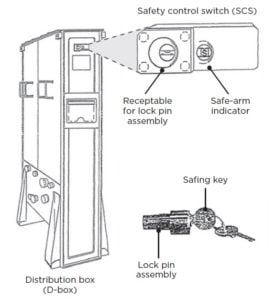Here’s something I bet you say to yourself pretty often: “Boy, I sure hope I don’t die in an accidental nuclear war today.” Okay, you may never have said that, but if you thought about it, you would.
More importantly, while it is not highly likely that you will die in an accidental or mistaken nuclear war today, the chances of that happening are likely greater than of dying in an intentional nuclear war—probably much greater. And that’s just plain crazy.
How is it possible you could die in such a catastrophic and pointless way? Because today, just like at the height of Cold War tensions, the United States and Russia keep many hundreds of nuclear-armed missiles on “prompt launch” alert, ready to be fired in just minutes. As a result, perhaps due to a tragic but preventable error, these weapons could wreak havoc in 30 minutes or less.
Put another way, for decades, U.S. soldiers have been sitting in underground silos—24 hours a day, seven days a week, 365 days a year—prepared to launch nuclear Armageddon at a moment’s notice. Once the order is given, the missiles would launch and hit their targets in the time it would take you to watch a re-run of The Simpsons.
During the Cold War, many argued it was a good idea to maintain nuclear weapons on high alert. It is eminently clear it does not make sense today.
We know this because of the disturbing number of incidents—from faulty sensor data to misconstrued training tapes—that came much closer than they should have to launching nuclear war by accident.
Because of this risk, U.S. presidents and retired military leaders have called for removing weapons from high alert for years. And experts have proposed a number of ideas to reduce the danger, including covering the silos in dirt or removing the warheads from the missiles.
We propose a much simpler method, something that will cost a pittance, can be done quickly, and will virtually eliminate the risk of our land-based missiles launching by mistake. That will make us all safer.
 Here’s how it works. The silos for U.S. land-based intercontinental missiles already have a switch that is designed to protect work crews as they perform maintenance on the weapons. A crew arrives at the silo, opens a hatch, descends down a level, and goes to a control panel. A worker inserts and turns a key in the “safety control switch” and pulls out a lock-pin assembly. Once this happens, it opens a circuit that prevents a launch command from causing the missile’s first-stage motor to ignite. The missile launch crew in the launch control center can still monitor the missile’s status but cannot launch it.
Here’s how it works. The silos for U.S. land-based intercontinental missiles already have a switch that is designed to protect work crews as they perform maintenance on the weapons. A crew arrives at the silo, opens a hatch, descends down a level, and goes to a control panel. A worker inserts and turns a key in the “safety control switch” and pulls out a lock-pin assembly. Once this happens, it opens a circuit that prevents a launch command from causing the missile’s first-stage motor to ignite. The missile launch crew in the launch control center can still monitor the missile’s status but cannot launch it.
That makes sense, because it obviously is a bad idea to incinerate soldiers in the silo by firing off the missile.
Every American should have the benefit afforded those soldiers. President Obama should direct the Air Force to use this safety system to remove U.S. land-based missiles from prompt launch alert.
Accidents happen; we need to make sure they aren’t nuclear.
